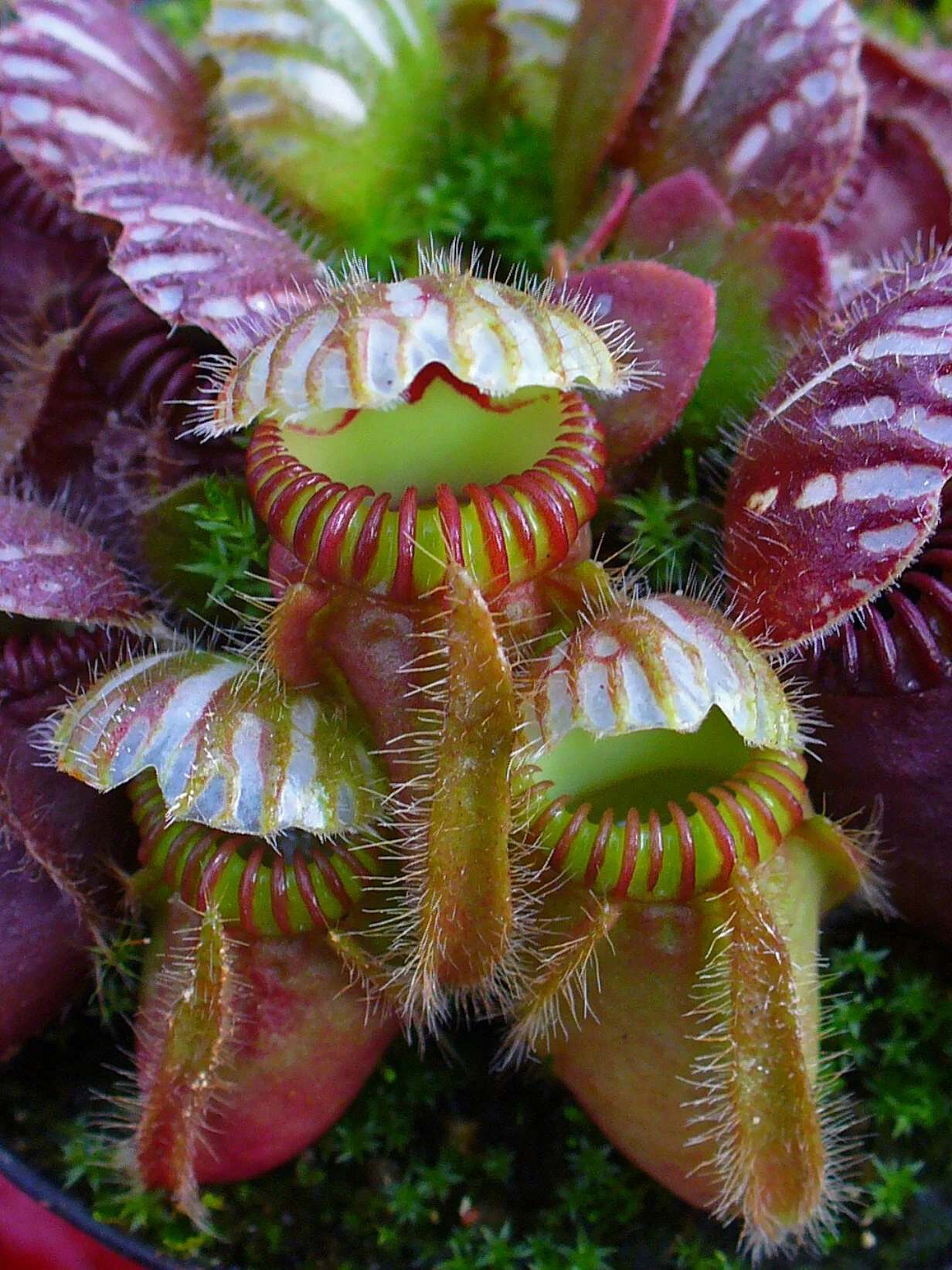Photo by H. Zell licensed under CC BY-SA 3.0
In a small corner of western Australia grows a truly unique carnivorous plant. Commonly referred to as the Albany pitcher plant, Cephalotus follicularis is, evolutionarily speaking, distinct among the pitcher plants. It is entirely unrelated to both the Sarraceniaceae and the Nepenthaceae.
This stunning case of convergent evolution stems from similar ecological limitations. Cephalotus grows in nutrient poor areas and thus must supplement itself with insect prey. It does so by growing modified leaves that are shaped into pitchers. The lid of each pitcher has two main functions. It keeps rain from diluting the digestive enzymes within and it also confuses insects.
A close inspection of the lid will reveal that it is full of clear spots. These spots function as windows, allowing light to penetrate, which confuses insects that have landed on the trap. As they fly upwards into the light, they crash into the lid and fall back down into the trap.
Photo by Lucas Arrrrgh licensed under CC BY-NC-ND 2.0
The relationship of Cephalotus to other plants has been the object of much scrutiny. Though it is different enough to warrant its own family (Cephalotaceae), its position in the greater scheme of plant taxonomy originally had it placed in Saxifragales. Genetic analysis has since moved it out of there and now places it within the order Oxalidales. What is most intriguing to me is that the closest sister lineage to this peculiar little pitcher plant are a group of trees in the family Brunelliaceae. Evolution can be funny like that.
Regardless of its relationship to other plants, Cephalotus follicularis has gained quite a bit of attention over the last few years. Its strange appearance and carnivorous habit have earned it a bit of stardom in the horticultural trade. A single specimen can fetch a hefty price tag. As a result, collecting from wild populations has caused a decline in numbers that are already hurting due to habitat destruction. Luckily they are easy to culture in captivity, which will hopefully take pressure off of them in the wild.
What's more, the loss of Cephalotus from the wild is hurting more than just the plant. A species of flightless, ant-mimicking fly requires Cephalotus pitchers to rear its young. They don't seem to mind growing up in the digestive enzymes of the pitchers and to date, their larvae have been found living nowhere else. If you are lucky enough to grow one of these plants, share the wealth. Captive reared specimens not only take pressure off wild populations, they are also much hardier. Lets keep wild Cephalotus in the wild!
Photo by Holger Hennern licensed under CC BY-SA 3.0
Photo Credits: Holger Hennern (Wikimedia Commons) and Lucas Arrrrgh (https://www.flickr.com/photos/chug/2121092119/)


